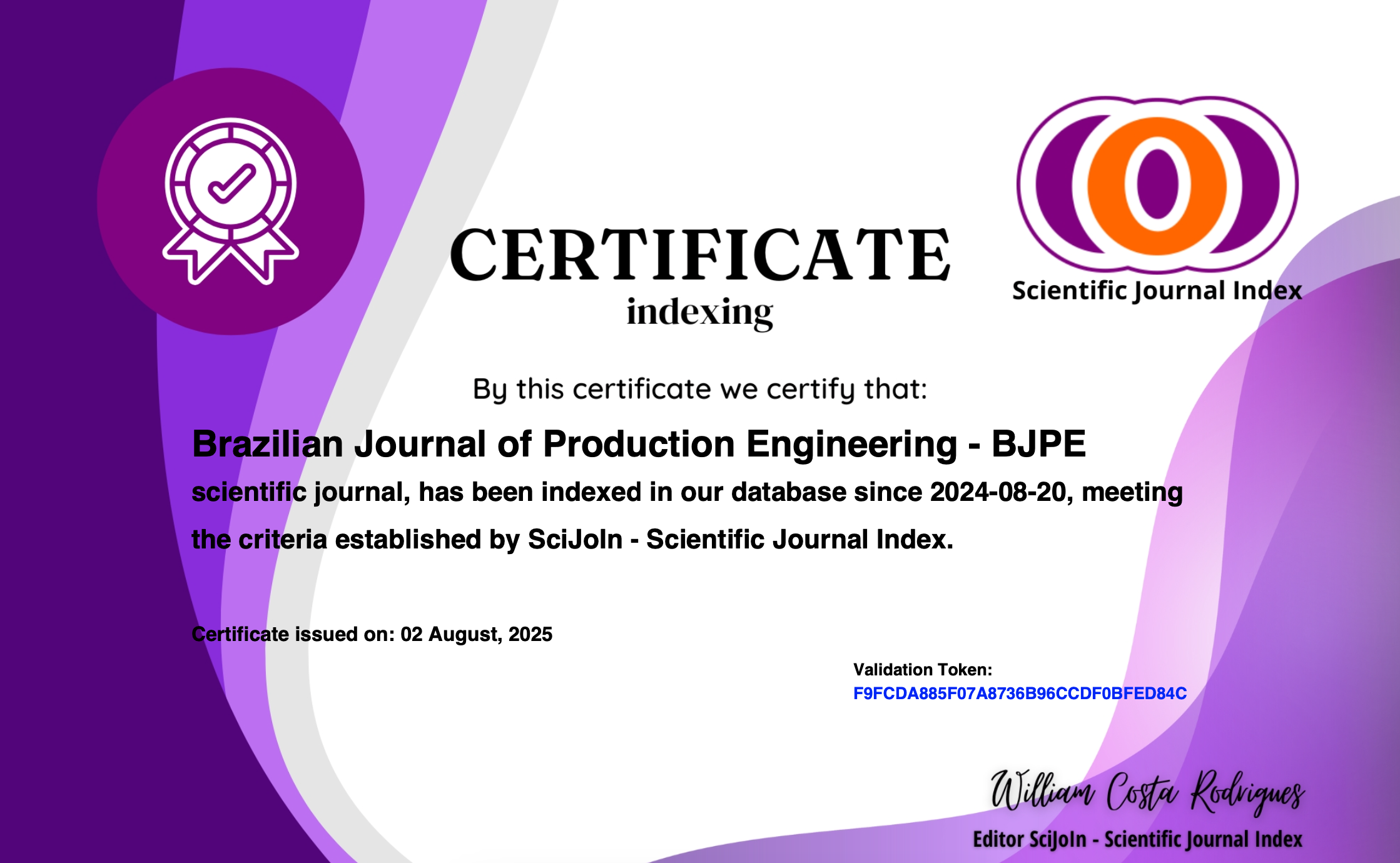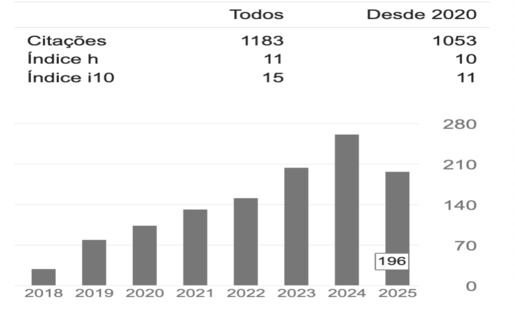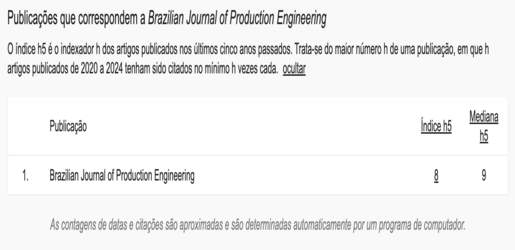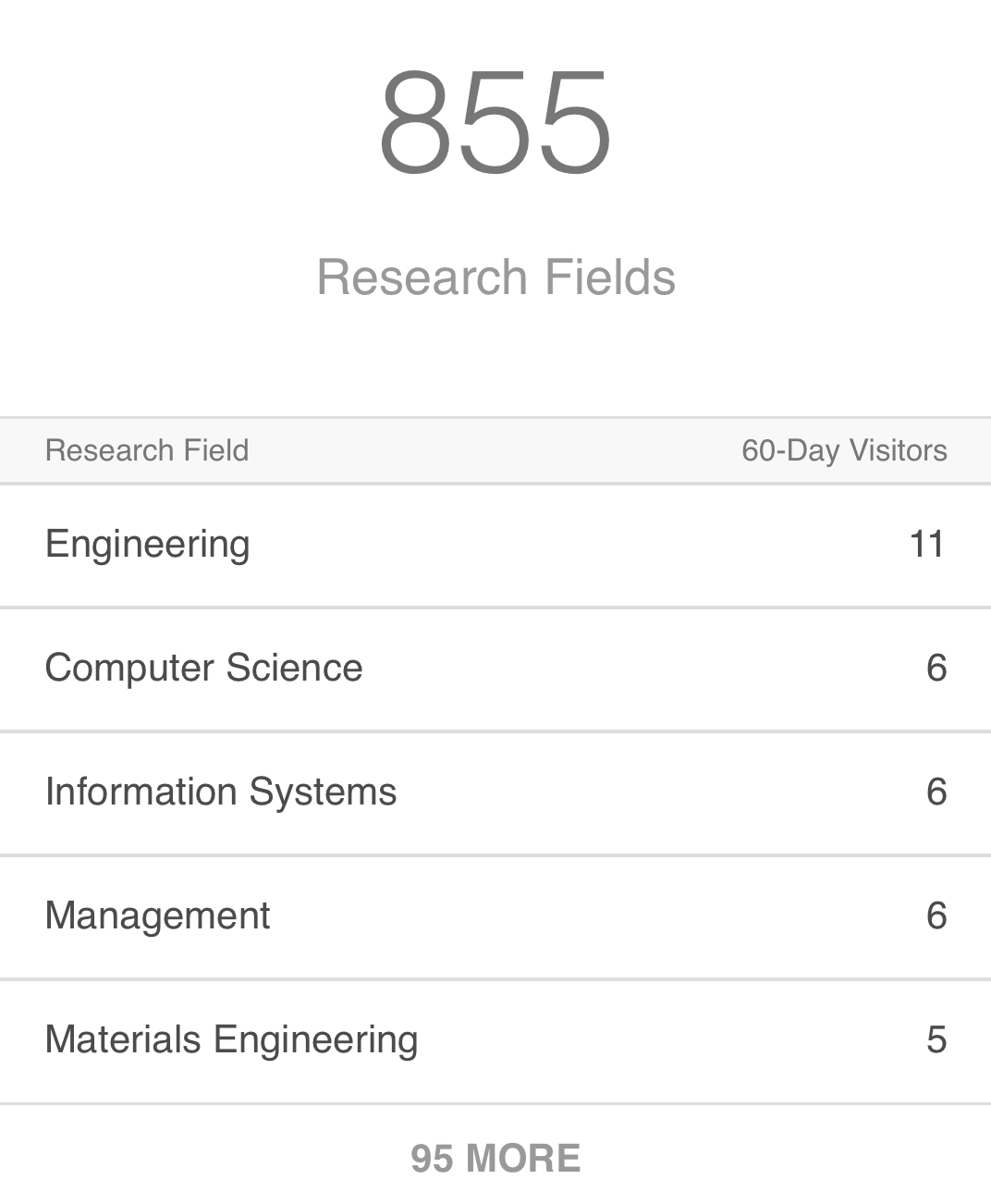Natural gas as a generating source in the diversification of the Brazilian electric matrix
DOI:
https://doi.org/10.47456/bjpe.v10i4.45556Palavras-chave:
gás natural, eletricidade, incentivosResumo
Energy consumption grows annually, requiring an increase in the production and distribution standards of available energy sources. One of the main energy consumptions is linked to the electricity sector, which is globally dependent on fossil fuels such as oil and coal. In Brazil, more than 60% of electricity consumption comes from hydroelectric plants, and the lack of variability in generating sources generates instability and energy insecurity in the country. In this sense, it is necessary to evaluate an alternative source of electricity that can work together with hydroelectric plants and guarantee the stability of generation. Natural gas presents itself as an alternative, as it is a safe source and less aggressive to the environment when compared to other non-renewable sources. Through data collection and bibliographic research on proven reserves, processing capacity, and distribution of natural gas, this work analyzed the Brazilian potential for the use of natural gas and the biggest gaps in the sector. The results showed that, despite the great potential in proven natural gas reserves, Brazil is stagnant in its processing and distribution capacity. In addition, there are challenges related to high rates and taxes on the use of natural gas.
Downloads
Referências
Aguilera, R. F. (2012). World natural gas endowment as a bridge towards zero carbon emissions. Technological Forecasting and Social Change, Perth, 79(3), 579-586.
ANP (2022). Boletim da Produção de Petróleo e Gás Natural. Rio de Janeiro: Anp. Available in https://www.gov.br/anp/pt-br/centrais-de-conteudo/publicacoes/boletins-anp/boletins/arquivos-bmppgn/2021/2021-03-boletim-pdf
ANP (2021). Boletim de Recursos e Reservas de Petróleo e Gás Natural 2021. Rio de Janeiro: Anp, 2021. Available in https://www.gov.br/anp/pt-br/centrais-de-conteudo/dados-estatisticos/arquivos-reservas-nacionais-de-petroleo-e-gas-natural/boletim_reservas_2021.pdf
Araujo, G. J. F. de & Oliveira, S. V. W. B. de. (2020). Análise de viabilidade econômica-financeira do uso de vinhaça para geração de eletricidade no Brasil. Cadernos Ebape.Br, São Paulo, 18(4), 936-955.
BP, British Petroleum (BP, 2020). Statistical Review of World Energy. Online: Bp, 2020. [internet], 68 p. Available in https://www.bp.com/content/dam/bp/business-sites/en/global/corporate/pdfs/energy-economics/statistical-review/bp-stats-review-2020-full-report.pdf
Campos, A. F., Silva, N. F. da, Pereira, M. G.; Freitas, M. A. V. (2016). A review of Brazilian natural gas industry: challenges and strategies. Renewable And Sustainable Energy Reviews, Rio de Janeiro, 75, 1207-1216.
CEIC. Catar Gás Natural: Exportações. 2021. Available https://www.ceicdata.com/pt/indicator/qatar/natural-gas-exports#:~:text=Os%20dados%20de%20G%C3%A1s%20Natural,Cub%20m%20mn%20em%202020
Cruz, P. P. C. & Guerra, L. D. (2022). Estudo de caso da extensão de gasodutos no Brasil: ênfase nas alternativas para expansão de novas malhas. XIII Fateclog, Mauá, 13(1), 1-11.
EIA. Annual Energy Outlook (2022). Washington: U.S. Department of Energy, 127 p.
EIA. International Energy Outlook (2019). Washington: U.S. Department of Energy, 85 p.
EIA. International Energy Outlook (2021). Washington: U.S. Department of Energy, 42 p.
ENERDATA. World Energy & Climate Statistics – Yearbook 2022. Available in https://yearbook.enerdata.net/natural-gas/balance-trade-world-data.html
EPE, Empresa de Pesquisa Energética (EPE, 2020). Demanda de Gás Natural Nos Mercados Nacional Internacional. Brasil: Epe.
EPE, (2021). Empresa de Pesquisa Energética, Rio de Janeiro. Estudos do Plano Decenal de Expansão de Energia 2031. Rio de Janeiro: EPE. Available https://www.gov.br/mme/pt-br/assuntos/noticias/CadernodeGsNaturalPDE203130nov211.pdf
FGV (2019). Transporte de Gás Natural no Brasil. Rio de Janeiro: Ceri, 50 p.
Fuhrmann, G, L. (2016). Análise dos novos condicionantes da oferta nacional de gás natural e a demanda termelétrica no próximo decênio. (Dissertação de Mestrado), Departamento de Engenharia Química, COPPE UFRJ, Rio de Janeiro.
Galvão, J. & Bermann, C. (2015). Crise hídrica e energia: conflitos no uso múltiplo das águas. Estudos Avançados, São Paulo, 29(84), 43-68.
Gillingham, K. & Huang, P. (2019). Is Abundant Natural Gas a Bridge to a Low-carbon Future or a Dead-end? The Energy Journal, Yale, 40(2), 1-26.
IBP, Instituto Brasileiro de Petróleo e Gás (IBP, 2019). Rio de Janeiro. Relatório de atividades 2019. [internet] [cited 2022 jul 02]. Rio de Janeiro: IBP. 29 p. Available https://www.ibp.org.br/personalizado/uploads/2020/03/relatorio-atividades-2019-ibp-compactado.pdf.
IEA, International Energy Agency - IEA (2015). Key World Energy Statistics 2015. Available in: http://www.iea.org/publications/freepublications/publication/key-world-energy-statistics-2015. Html.
IEA, International Energy Agency – IEA (2020). Global Energy Review 2020. [internet]: Iea, 2020. 55 p. [cited 2022 out 15]. Available in https://iea.blob.core.windows.net/assets/7e802f6a-0b30-4714-abb1-46f21a7a9530/Global_Energy_Review_2020.pdf.
Kan, S. Y., Chen, B., Wu, X. F., Chen, Z. M., & Chen, G. Q. (2019). Natural gas overview for world economy: from primary supply to final demand via global supply chains. Energy Policy, Beijing, 124, 215-225.
Kerdan, I. G., Jalil-Vega, F., Toole, J., Gulati, S., Giarola, S., & Hawkes, A. (2019). Modelling cost-effective pathways for natural gas infrastructure: a southern Brazil case study. Applied Energy, Londres, 255, p. 11.
Lima, M. T. da S. L. & Souza, M. C. de. (2015). Discorrendo Sobre O Uso Das Termelétricas No Brasil. Ciência e Natura, Brasilia, 37, 17, 18 jun.
Pedroso, L., Silva, F., Melo, A., Junior, M., & Shimoya, A. (2018). Demandas atuais e futuras da biomassa e da energia renovável no Brasil e no mundo. Brazilian Journal of Development, 4 (5), 1980-1996.
Pereira, D. S. & Silva Neto, R. (2021). Diversificação de fontes geradoras da matriz elétrica brasileira: uma revisão sistemática. Meio Ambiente (Brasil), 3(1), 02-21.
Santos, E. M. dos & Peyerl, D.; Netto, A. L. A. (2020). Oportunidades e Desafios do Gás Natural e do Gás Natural Liquefeito no Brasil. Rio de Janeiro: Letracapital, 186 p.
Santos, M. G. R. S., Correia, L. M. S., Medeiros, J. L. de, & Araújo, O. de Q. F. (2017). Natural gas dehydration by molecular sieve in offshore plants: impact of increasing carbon dioxide content. Energy Conversion And Management, Rio de Janeiro, 149, 760-773.
Taets, L. A. R. (2021). Análise da utilização conjunta do gás natural e das energias renováveis para a geração de eletricidade. (Tese de doutorado). Instituto de Engenharia Mecânica, Universidade Federal de Itajubá. Itajubá.
Thomson Reuters Practical. (2022). Practical Law. [internet], [cited 2022 dez 10], Manuscript available https://www.thomsonreuters.com.br/pt/juridico/practical-law.html.
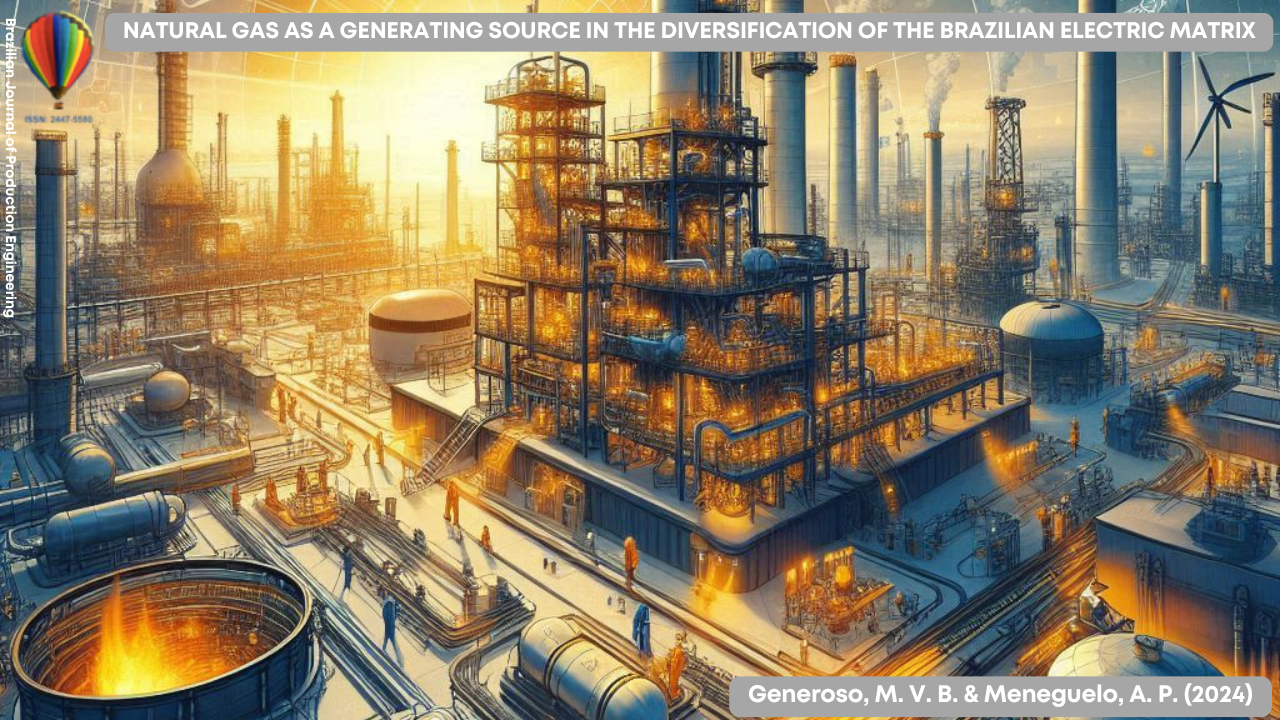
Downloads
Publicado
Edição
Seção
Licença
Copyright (c) 2024 Mariana Vieira Barcelos Generoso, Ana Paula Meneguelo (Autor)

Este trabalho está licenciado sob uma licença Creative Commons Attribution 4.0 International License.

Todos os trabalhos publicados na Brazilian Journal of Production Engineering (BJPE) estão licenciados sob a Creative Commons Atribuição 4.0 Internacional (CC BY 4.0).
Isso significa que:
-
Qualquer pessoa pode copiar, distribuir, exibir, adaptar, remixar e até utilizar comercialmente os conteúdos publicados na revista;
-
Desde que sejam atribuídos os devidos créditos aos autores e à BJPE como fonte original;
-
Não é exigida permissão adicional para reutilização, desde que respeitados os termos da licença.
Esta política está em conformidade com os princípios do acesso aberto, promovendo a ampla disseminação do conhecimento científico.



2.png)

